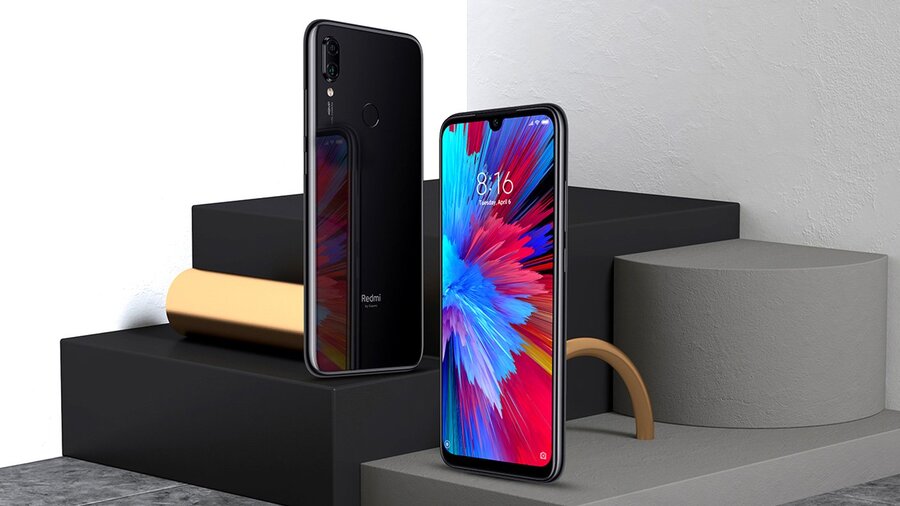The Redmi Note lineup is one of the key reasons behind the success of Xiaomi in India. Starting with the 2016’s Redmi Note 3, the Chinese OEM continues to release mid-ranger Qualcomm Snapdragon SoC powered Note series phones with an irresistible price-performance ratio.

However, the product portfolio of Xiaomi is a convoluted mess for global customers. The company preferred to release MediaTek variant of the same phone with identical name in China, which were enough to confuse importers and overseas buyers.

Fast forward to the Q1 of 2019 when Xiaomi launched two distinct variants of the seventh generation of the Redmi Note series: Redmi Note 7 and Redmi Note 7 Pro.
Android community saw the trend one year earlier, when the OEM rebranded Chinese/global Redmi 5 Plus (codename: vince) as Redmi Note 5 in India. On the other hand, Indian Redmi Note 5 Pro (codename: whyred) was sold internationally as Redmi Note 5 AI Dual Camera. ?
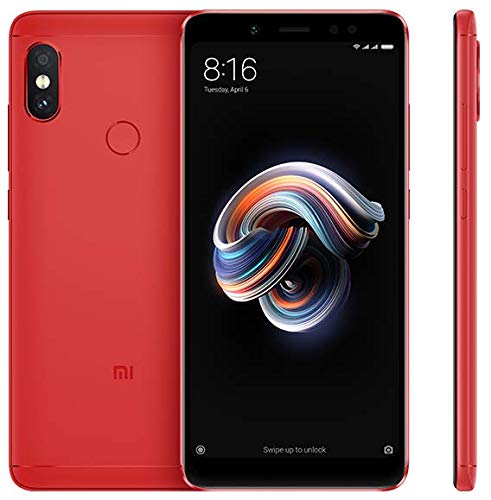
After skipping the regular Note variant in sixth generation, Xiaomi apparently settled down with a proper naming scheme with Redmi Note 7 and Note 7 Pro. The illusion quickly shattered when users realized that the Chinese and Indian models of Redmi Note 7 use different camera sensors.
Xiaomi became the part of the 48 MP bandwagon by introducing the Samsung S5KGM1 (ISOCELL GM-1) sensor as the primary rear camera of the regular Redmi Note 7 in China. The Pro variant, which was released later in India, was blessed with a better Sony IMX586 sensor.

The aforementioned S5KGM1 and IMX586 are the only two choices for OEMs as 48 MP camera sensors. But for some unforeseen reasons, Xiaomi went for an older Sony IMX486 (12 MP) sensor with the Indian variant of the Redmi Note 7.
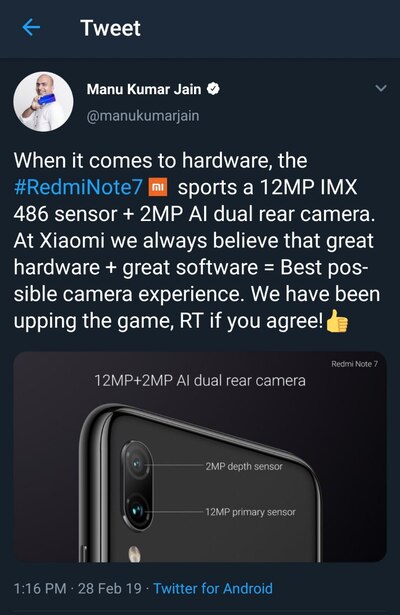
While the internal model names are different (M1901F7I for India, M1901F7G/H for global, M1901F7E/T/C for China), these two distinct Redmi Note 7 variants share a common codename (‘lavender’) and unified kernel source code.
Xiaomi also ships multiple MIUI variants depending on regions. The Indian firmware is being separately updated from international and EU specific channels, and the Chinese distribution is entirely dissimilar to them.
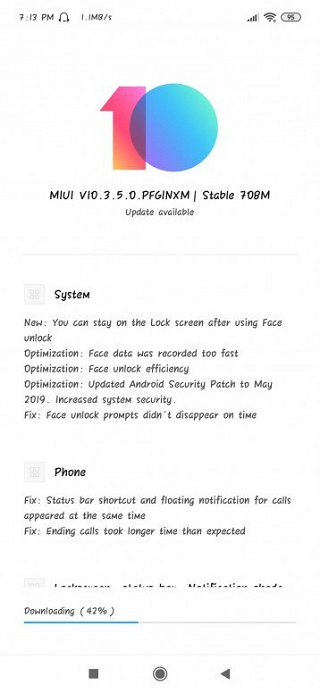
In an unexpected turn of events, the Chinese OEM announced Redmi Note 7S in India with an identical internal config as the Redmi Note 7. The primary differentiating factor between them is the rear camera setup, which is now 48 MP + 5 MP instead of 12 MP + 2 MP.
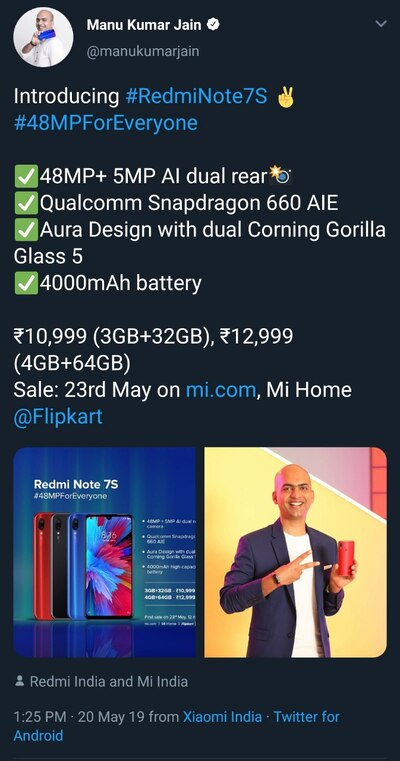
Looks familiar? It should be, as the ‘new’ model is nothing but the rebranded version of the global/Chinese Redmi Note 7. Besides other components, the back camera sensors are exactly same.
- Samsung S5KGM1: 48MP, f/1.8 – 0.8 µm (4 in 1 – 1,6 µm) – PDAF
- Samsung S5KSE8 5MP, f/2.0 – 1.12 µm

Thanks to the shotgun marketing strategy of Xiaomi, the whole price segment is now extremely chaotic for regular buyers. Raghu Reddy, Xiaomi India’s head of Categories & Online Sales, stepped in to clear out the confusions, but hinted something interesting.
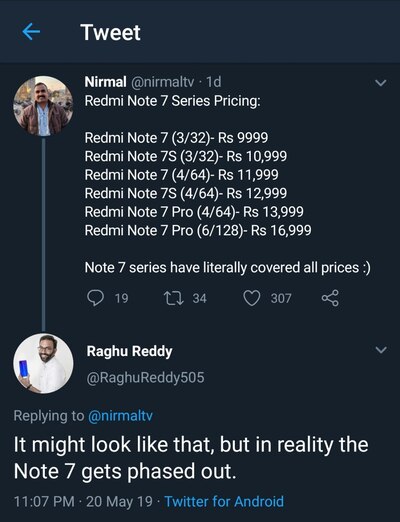
IMHO, the short-lived Redmi Note 7 in India might serve its purpose, but this kind of move actually hurts consumer sentiment. Xiaomi did the same with Redmi Note 6 Pro, which got the shelf time of less than 6 months.
There is no doubt that Redmi (now a separate entity from Xiaomi) becomes the unanimous camera king in the sub-₹15,000 (~$215) category in India, but about the Redmi Note 7 buyers?
According to another official source, Xiaomi will eventually stop production of the Redmi Note 7 in India in favor of the newly launched Redmi Note 7S. The global as well as Chinese variants should be unaffected, as Xiaomi is merely branching out them with this 7S model.

Readers can compare the specs of the global Redmi Note 7 and the Indian Redmi Note 7S to spot the similarities.
There is no doubt that the Redmi Note 7S will use the same firmware as the regular Note 7, thus we should see unified custom ROMs and other aftermarket developments on them.
The #48MP hype is real and Xiaomi is milking it as much as possible. FYI, the Redmi Note 7S will be available on and from May 23, at 12 PM from Mi.com, Mi Home & Flipkart.

Are you planning to buy the new Redmi Note 7S? Comment below.
PiunikaWeb is a unique initiative that mainly focuses on investigative journalism. This means we do a lot of hard work to come up with news stories that are either ‘exclusive,’ ‘breaking,’ or ‘curated’ in nature. Perhaps that’s the reason our work has been picked by the likes of Forbes, Foxnews, Gizmodo, TechCrunch, Engadget, The Verge, Macrumors, and more. Do take a tour of our website to get a feel of our work. And if you like what we do, stay connected with us on Twitter (@PiunikaWeb) and other social media channels to receive timely updates on stories we publish.
.

